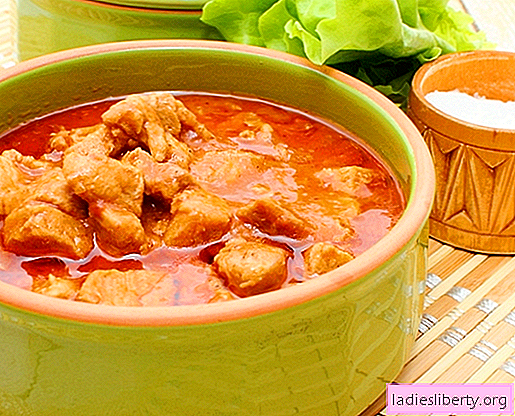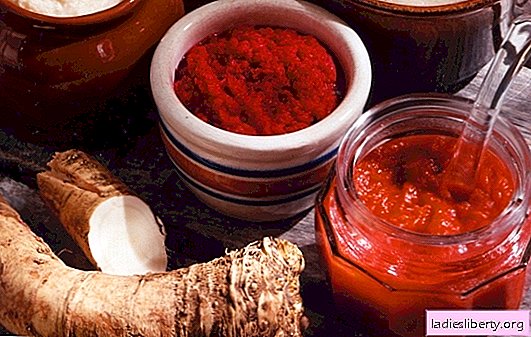
This canned product can be stored for a long time without a refrigerator, without losing its nutritional value and taste.
It has become a lifesaver for tourists, geologists, the military, or simply in extreme situations, when there is no fresh meat or it is impossible to engage in full cooking.
Today, canned food producers have serious competitors who know how to make stewed meat in an autoclave at home.
Stewed in an autoclave at home: does it make sense?
Canned meat is consumed by 30 percent of the population of our country, and their production exceeded 500 million conditional cans. In the trading network you can find up to 100 items of stew. The product is produced from beef, pork, poultry, rabbit, venison, offal. It is prepared in its own juice, with the addition of sauces, cereals, vegetables or in the form of pastes.
For the food industry, there are certain GOSTs and TUs that determine the permissible composition of stew. The product of the highest and first grade should contain at least 54-56% natural meat (weight of pieces about 30 g), bay leaf, pepper and salt. In addition, no more than 17% fat is allowed. Such canned food is stored from 3 to 6 years.
The remaining varieties of products can be produced from lower quality components:
• pressed meat;
• offal;
• trim;
• crushed veins, cartilage, skins;
• soybeans.
They also include food additives, flavorings. Instead of meat, meat is often put in imported products, and sodium nitrite is used as a preservative, which gives the contents a natural color and increases the shelf life. For domestic manufacturers, there are restrictions on the use of this additive, but still unscrupulous use it uncontrollably.
Despite the abundance of canned food as a result of studies from 14 samples of domestic production, 10 did not pass tests for compliance with quality. This is the answer, is there any point in homework. The process is especially beneficial for those who have their own subsidiary plots. It remains only to learn how to make a stew in an autoclave at home.
Autoclave stew at home: technology and recipes
Autoclave - the unit with which sterilization is performed. It is used in medicine for processing tools, the automotive industry to produce distilled water for batteries and in other areas of human activity. As a device for home canning, it began to be used in the 60s of the last century.
The installation has the form of a metal vessel. A fitting for air injection, a manometer, with which the pressure is controlled and a thermometer showing the temperature inside the unit, is attached to its hermetically sealed lid.

Operating principle: the device boots up, quickly heats up to a certain temperature - about 120 degrees and produces canning at constant pressure (4-5 atmospheres). The simplicity of the device allows you to make it yourself, for example, from a gas cylinder.
Units manufactured by manufacturers differ:
• vessel volume - from 20 to 46 liters;
• heating methods - gas, electric, for open fire;
• design features - horizontal and vertical loading, with pointer thermometer, electronic control unit and other devices;
• material of manufacture - aluminum, food steel.
How to make stew in an autoclave at home?
Classic technology for any meat:
1. Prepare the meat. Frozen foods are not recommended. Fresh pork, lamb, beef are cut in such a way that it is convenient to lay in jars. In this case, meat is taken from various parts of the carcass, the brain bones are removed, the ribs are chopped into pieces. The bird is gutted and skinned. You can cook with bones. If there is not enough fat, as happens in rabbit or beef, add it additionally, because without this, canned food will not be stored for a long time.

2. We wash the cans, lids and inspect them for rust, chips and other defects.
3. In each jar we put a bay leaf (or half), several peas of black and allspice, salt and spices according to the recipe.
4. We lay out the meat so that a few centimeters remain to the top of the container. Lean blanks are poured on top with fat or broth.

5. Roll up the lids, put in an autoclave and pour enough water so that it covers the banks completely.

6. Hermetically tighten the lid of the autoclave and begin to pump up pressure to 1.5-2 atmospheres so as not to break the lids in the banks. After 30 minutes, the autoclave is heated to 120 degrees. In this mode, the pressure can reach 4-5 atmospheres. The autoclave at 120 degrees should work for about 20 minutes. Then we begin the process of cooling to 30 degrees, while controlling the pressure! Do not lower it, so that there is no difference, and banks do not explode.

7. After cooling, gradually reduce the pressure to 0. Open the lid of the autoclave. We take out the banks after complete cooling!
8. Wipe the surface dry, turn the container on the lid so that the fat rises to the surface. After solidification of the can. clean in a cool place.

This is a basic recipe.suggesting how to make a stew in an autoclave at home. Your favorite spices, preliminary marinating will diversify the taste of the product. For example, canned chicken is extraordinary, if the pieces are pre-marinated in mustard. If you do not for long-term storage, then you can put carrots and onions. Any vegetables are laid raw and poured with the meat a small amount of broth. Can pre
You can cook stew with any cereal. Most often used rice, buckwheat, barley. For example, chicken with rice will need butter, salt, onions, carrots, peppers, broth. Pieces of poultry are fried in vegetable oil. Rice is boiled for 10 minutes and combined with butter. Vegetables are cut into pieces and mixed with the main ingredients. The entire workpiece is laid out in banks, pour hot broth. The time spent in the autoclave is about 30 minutes at 120 degrees.
It turns out very tasty duck in Adyghe. From one duck to 2.5 kg comes 4-5 cans with a volume of 0.5 l of the finished product. Put the pieces cut into pieces in a container and fill with dressing, which is prepared from onions and red pepper. The ingredients are fried with water, flour, garlic and fat. Salt to taste. Roll up cans and place in an autoclave for 30 minutes at a temperature of 120 degrees. Instead of ducks, you can take chicken. If the old bird is stewed, the cooking time increases.
All recipes on how to make a stew in an autoclave at home - this is the scope for improvisation.
Autoclave stew at home: reasons for failure
The technology for preparing canned meat is quite simple. Failures often occur due to non-compliance. What can happen and how to avoid it:
• insufficiently succulent meat. It happens due to lack of fat. To prevent this from happening, it is necessary to preserve only fresh products and additionally add pork, bone or subcutaneous fat;
• stew turned into porridge. Occurs if products from the store were used as raw materials. Never make canned goods from store legs or frozen meat;
• the product is bitter. This flavor gives a bay leaf that has been stored for over a year. To bookmark the stew you need to choose the leaves of olive color and put them in a small amount;
• after preparation of the lid, draws in the cans. This is because before heating, the pressure in the autoclave was above 4 atmospheres. It is necessary to carefully monitor the pressure;
• lids swell. May be due to several reasons. The jar was removed from the autoclave, without waiting until it cools down. We filled it with a blank to the top, without leaving a gap of 2-3 cm. Follow the process and there will be no troubles.
Many advise to lightly fry the meat before laying, so that no blood is visible. Otherwise, flakes may form during the cooking process, which somewhat worsen the appearance of the canned food. But this is a matter of taste and does not affect the quality of the finished stew. At the bottom of the jar, it is recommended to put small bones. They will give a jelly-like consistency of liquid. All spices and salt are added to taste directly in the meat, which is laid in jars after processing.
For home use, a small unit is enough. Beginners are better off making a test batch of several cans. All containers should be the same in height. If the autoclave is not completely filled, then water is needed only by 2/3 of its volume.
In order for the autoclave to not let you down, you need to carefully monitor its operation, not to allow an increase in pressure, to control the temperature regime (not more than 120 degrees) to comply with the requirements of the operating instructions. And you will get a quality home-made product.











